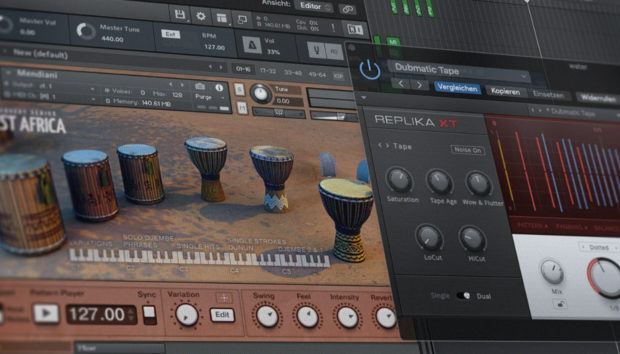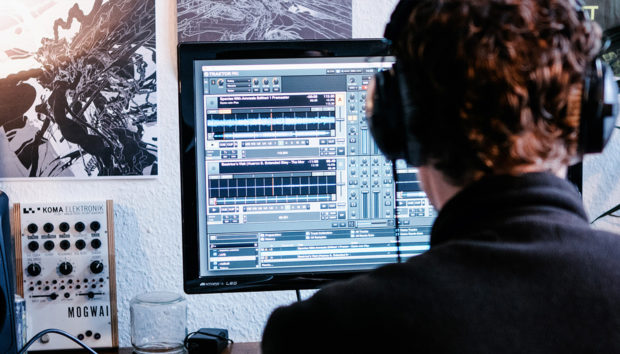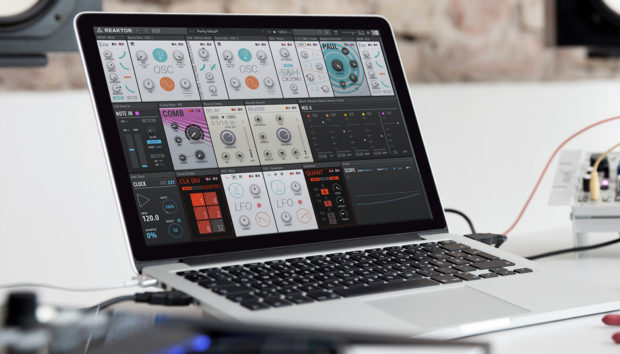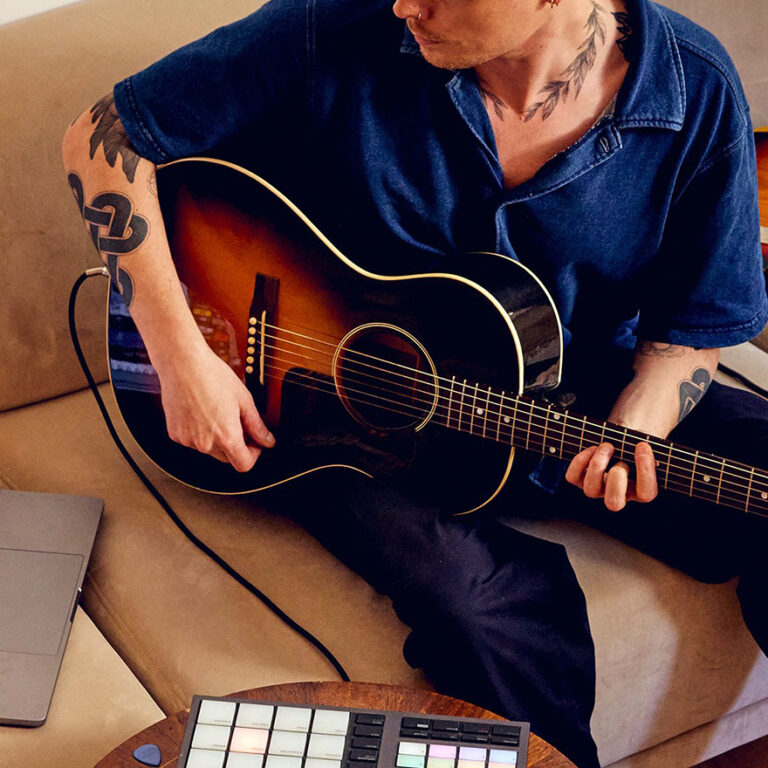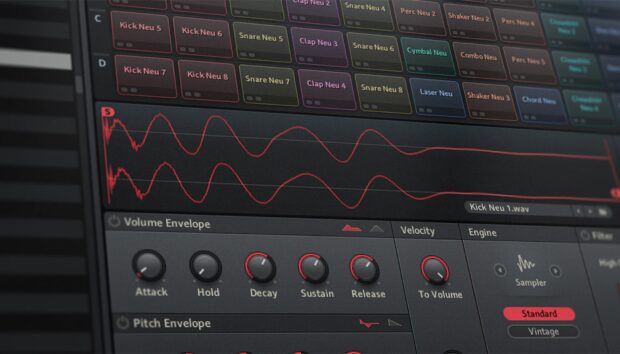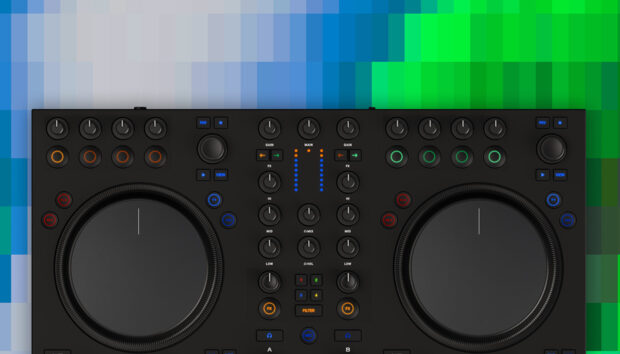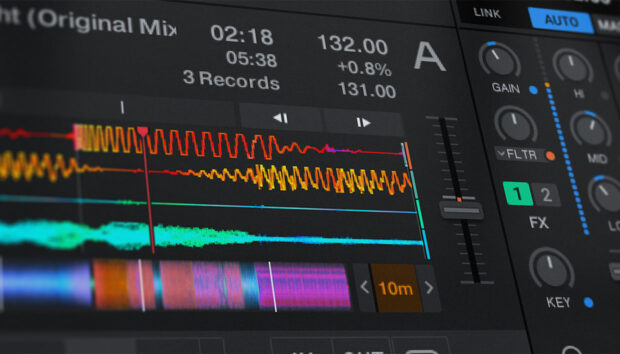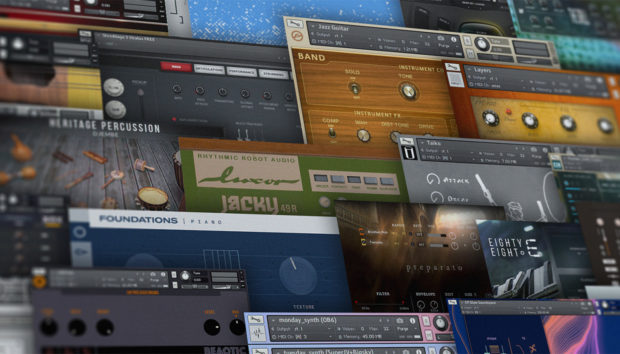Curious about how to make music? This beginner-friendly guide walks you through the essentials, from songwriting and music theory basics to building a home studio, mixing and mastering, and even distributing and promoting your releases. You’ll learn, step-by-step, how to create your own songs.
Jump to these sections:
- Learn how to write a song
- Understand music theory
- Build a home studio
- Learn how to mix music
- Learn how to polish your tracks
- Understand music distribution
- Promote your music
Follow along with this tutorial using Komplete Start, a free collection of professional instruments, sounds, samples, and more to create your music.
1. Learn how to write a song
Writing music starts with a good idea. A good song will always be a great song, whether it’s played simply on an instrument, or recorded and produced into a full track. Basic songwriting skills are essential for every aspiring producer, and it’s equally important to find a workflow that suits you, whether that’s writing an entire song with a guitar, and then producing it, or creating a beat using software or hardware and expanding the idea into a track.

Essential songwriting skills include learning to compose rhythms, chord progressions, melodies, lyrics and develop a song structure. Crafting a good song will require you to learn basic song arrangement, including how to compose a verse, chorus, bridge, and intro and outro for a song.
One of the best ways to start out learning songwriting is by using a song as a reference track, and analyzing the chord progressions, rhythms and song structure (verse, chorus, bridge, etc). Try to write a lot of songs and/or beats, and eventually, you’ll write some good ones. To learn more about songwriting, check out this guide. If you’d like to learn more the basics of music composition, our beginner’s guide to composing music is a helpful resource.

A basic understanding of music theory can significantly improve your ability to compose, produce and communicate with musicians. Basic music theory concepts include learning the names of the notes on the musical staff, note and rest values, time signatures in music, the relationship between notes (intervals), and scales and triads.
Once you understand how to create triads, you can learn how to build chords, and then move onto creating chord progressions. Our guide to basic music theory presents an in-depth breakdown of music theory essentials for beginners.
3. Build a home studio
Thanks to modern technology, it’s easier than ever to build a small home studio. You’ll want to start with a laptop or computer to make music on, and you may want to invest in a hard drive to store projects on. You’ll need to purchase a digital audio workstation (DAW) like Ableton, Logic, FL Studio, or Studio One to create your music in. Other essentials for music making include a pair of good quality headphones, and a MIDI keyboard or MIDI controller for composing digital music.

To create sounds and add effects, pick up a free copy of Komplete Start, a collection of instruments, synths, and free effects for producers. You’ll also want to build a collection of samples to use in your music, and learn about sampling techniques for electronic music production. You’ll also want to invest in an audio interface to record vocals and acoustic instruments, and connect a pair of studio monitors to your audio interface to listen to your music and mixes. Other essentials include mixing and mastering software.
If you’re looking for a pristine sonic environment to mindfully compose and accurately mix your tracks, you’ll need to invest in acoustic room treatments.
4. Learn how to mix music
Once you have a song or beat composed, the next step is to learn how to mix music. Mixing is the art of balancing each of the musical elements in a track together so the overall song sounds balanced. Mixing involves adjusting track levels, frequencies, and the spatial placement (panning) of each element to achieve a desired sonic balance. Tools like iZotope Elements Suite allow you to sculpt your sound and achieve a professional sounding mix with ease.
Effective mixing is crucial because it transforms individual recordings into a cohesive, polished song. Without proper mixing, a track can sound muddy, unbalanced, or amateurish, even if the individual performances are excellent.
5. Learn mastering
Mastering is the last step in the music production chain. This final step allows you to enhance the overall sound of the mix, and shape the sound of the mix into a professional product that can compete in today’s music market. Learning mastering includes learning how to apply EQ, compression, and peak limiters effectively to a mix.
Learning to master includes considering the final destination for the product, either digital or physical, choosing the appropriate volume level, checking meters, and using reference tracks as a guide for the overall finished sound. Mastering was once an art that could only be done by a trained engineer working with a specific set of hardware and software tools. Today’s software like Ozone allows music creators to achieve great results for less time and cost.
For starters, try these free iZotope plugins, including Ozone EQ and Audiolens that will help you to fine tune your mix, and match mixes and masters to your favourite productions.
6. Understand music distribution
To distribute your music, you’ll need to find a digital distributor that will distribute your music to streaming services and online music stores. Some of the top online distribution services include DistroKid, TuneCore, CD Baby, Amuse, AWAL, and Symphonic.

There are many other distribution services, and even more distribution companies available if you plan to open a record label. Here’s a comprehensive list of a few more distribution services.
Once you sign with a distributor, you can choose a release date for a song, and the distributor will make it available on streaming sites and online music stores on the day you choose. If you sign your music with a record label, the record label will take care of distributing your music to streaming services and stores.
7. Promote your music
It’s important to promote your music so that people will hear it. Promoting your music includes creating videos and photos to accompany the music to attract an audience and engage your community, and posting up content on social media. Developing an engaging social media presence will help you to build a community of people who are interested in your music.

You’ll need to create a marketing plan for your release that includes reaching out to playlists, influencers, music magazines and blogs, DJs and radio hosts, and your mailing list. Signing up for artist services like Spotify for Artists will allow you to use their custom tools to promote your release. If you perform live, playing live can be one of the best ways to promote your new music, and you may want to plan a launch party for your single, or EP.
Start making music
Now that you’ve learned more about how to start making music, it’s time to begin creating some of your own music. Start out by learning songwriting, music theory and building your home studio.
Learn how to mix and master your music, and choose a music distribution service to work with.
Lastly, create content to accompany your music and build a marketing plan to promote your release. Making music is one of the best hobbies and can turn into a career for many.
Download a free copy of Komplete Start and iZotope’s free plugins, and get started producing music today!
